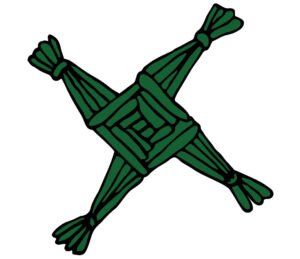The recent full moon marked the middle of the Anglo-Saxon month of Æfterra Ġēola, literally “after Yule.” It is the first month of the new year.
In the heart of winter, when the world remains cloaked in frost, an ancient festival emerges from the depths of tradition. The celebration of Oimelc, observed in early February, marks the halfway point between the winter solstice and the spring equinox. The time reminds us of our connection to nature, light, and the divine promise of renewal.
The festival is synonymous with the returning sun, a beacon of hope amid winter’s chill. Its symbolism is light and fire fire. We honor the lengthening days and the promise of spring.
The name of the festival derives from the Anglo-Saxon for “ewe’s milk.” It symbolizes that kid is in the belly of the mother and soon will be born with the coming of spring. This imagery reminds us that in the wintery womb of the Mother, so is her child the agrarian Man-In-Green inside waiting to claim his place in her light.
The name was borrowed for the name of the Celtic festival of Imbolc, by which many know it today. The day was holy to the goddess Brigid. The hanging of her cross is common at this time.
On February 2nd many Christians commemorate the presentation of Jesus at the Temple and the purification of the Virgin Mary. Central to Candlemas is the blessing of candles, a practice symbolizing the Light of Christ entering the world, symbolizing spiritual purity and guidance in the darkness of life. The festival retains the earlier themes of renewal and spiritual cleansing.

